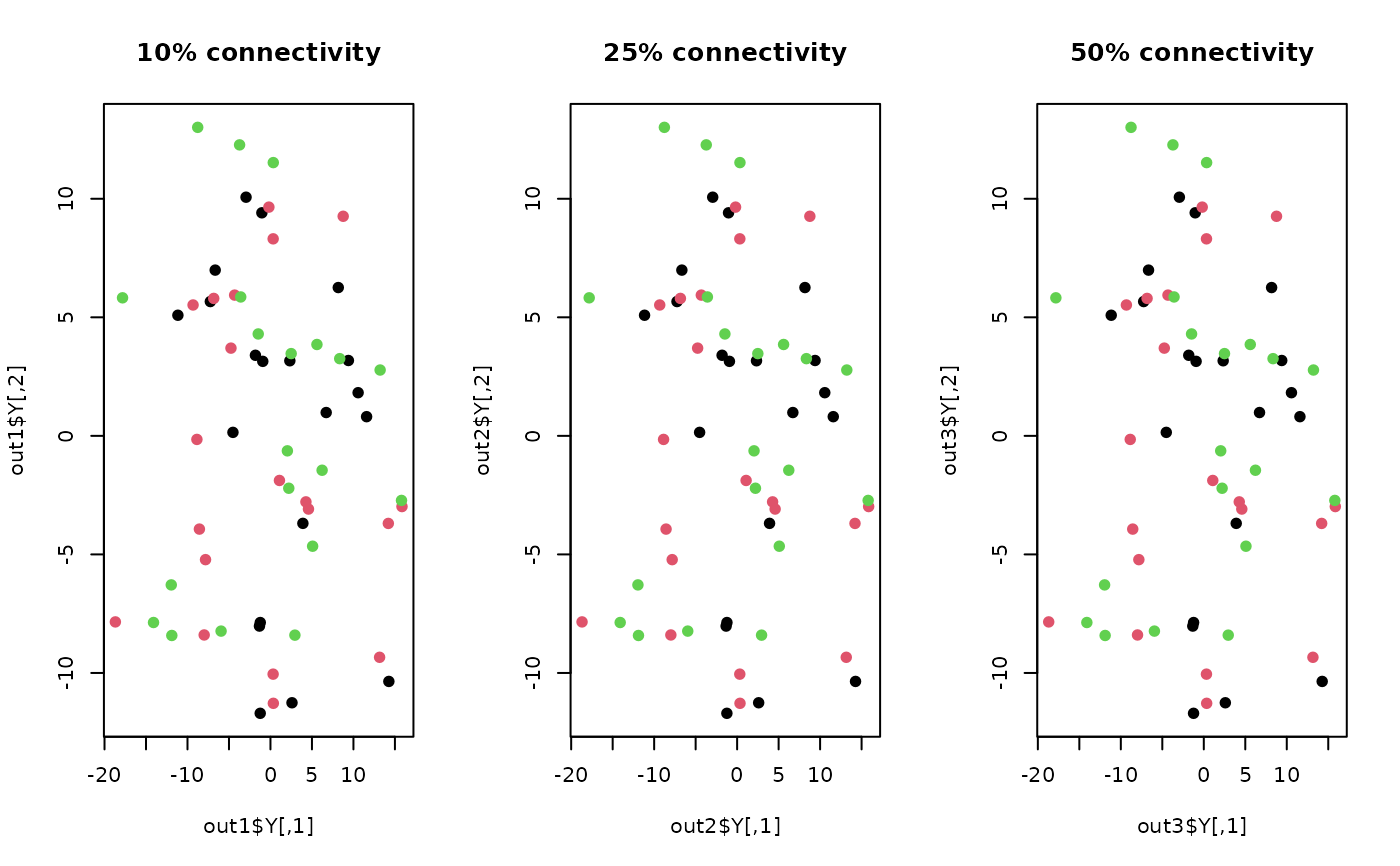Locally Discriminating Projection (LDP) is a supervised linear dimension reduction method. It utilizes both label/class information and local neighborhood information to discover the intrinsic structure of the data. It can be considered as an extension of LPP in a supervised manner.
Arguments
- X
an \((n\times p)\) matrix or data frame whose rows are observations and columns represent independent variables.
- label
a length-\(n\) vector of data class labels.
- ndim
an integer-valued target dimension.
- type
a vector of neighborhood graph construction. Following types are supported;
c("knn",k),c("enn",radius), andc("proportion",ratio). Default isc("proportion",0.1), connecting about 1/10 of nearest data points among all data points. See alsoaux.graphnbdfor more details.- preprocess
an additional option for preprocessing the data. Default is "center". See also
aux.preprocessfor more details.- beta
bandwidth parameter for heat kernel in \((0,\infty)\).
Value
a named list containing
- Y
an \((n\times ndim)\) matrix whose rows are embedded observations.
- trfinfo
a list containing information for out-of-sample prediction.
- projection
a \((p\times ndim)\) whose columns are basis for projection.
References
Zhao H, Sun S, Jing Z, Yang J (2006). “Local Structure Based Supervised Feature Extraction.” Pattern Recognition, 39(8), 1546--1550.
Examples
## generate data of 3 types with clear difference
dt1 = aux.gensamples(n=20)-100
dt2 = aux.gensamples(n=20)
dt3 = aux.gensamples(n=20)+100
## merge the data and create a label correspondingly
X = rbind(dt1,dt2,dt3)
label = rep(1:3, each=20)
## try different neighborhood sizes
out1 = do.ldp(X, label, type=c("proportion",0.10))
out2 = do.ldp(X, label, type=c("proportion",0.25))
out3 = do.ldp(X, label, type=c("proportion",0.50))
## visualize
opar <- par(no.readonly=TRUE)
par(mfrow=c(1,3))
plot(out1$Y, col=label, pch=19, main="10% connectivity")
plot(out2$Y, col=label, pch=19, main="25% connectivity")
plot(out3$Y, col=label, pch=19, main="50% connectivity")
 par(opar)
par(opar)